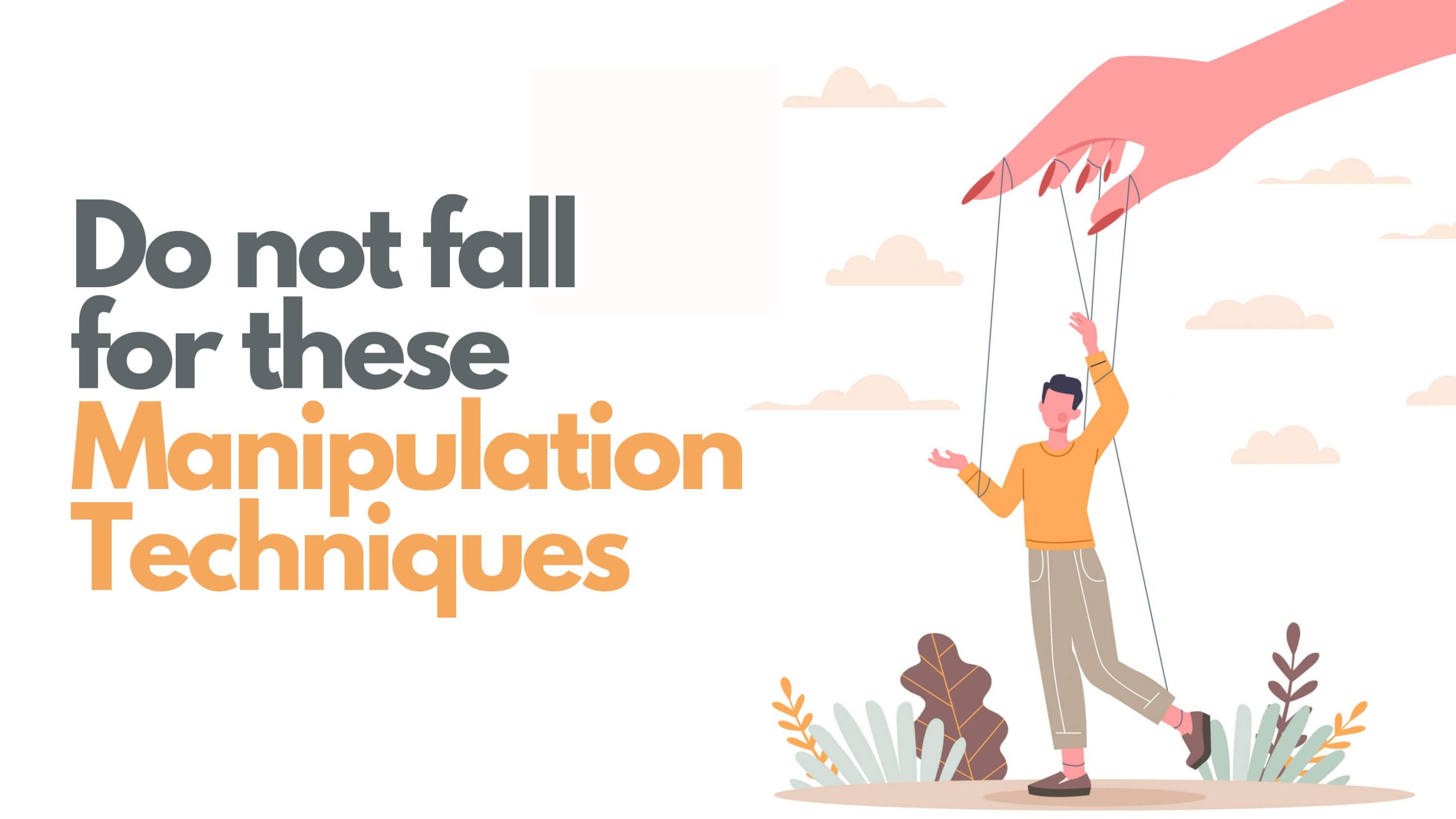“True love is built on free will and free choice, not control and manipulation.” – Ken Poirot
People are not always civil. Sometimes, they can get quite nasty with the things they do, although they are not always very obvious about these. Instead, they can use manipulative techniques that push us to do what they want us to do. Here is a quick guide to how you can recognize and avoid some of the most common manipulation techniques.
Making you feel guilty
The first common tactic is to make you feel guilty when you seem unwilling to do what they ask. Imagine this: a colleague asks you to cover his workload for the next day, but you already have plans. When you communicate this, your colleague makes you feel guilty by saying how you’ve let them down or how they are then stuck in the workplace. But, ultimately, you didn’t do anything wrong.
How can you address this? Set your boundaries clearly and steer away from people who seem to have trouble respecting these boundaries. You’re allowed to say no and to do things differently in your own life.
Flattering you to make you more pliable
Here is another example of manipulation. The person compliments you: your looks or your work ethic, whatever, but only do this right before they ask you for something. They might not compliment you authentically, but flatter you only as a means to an end.
You can usually see this when they flatter you in a specific way: “Oh, you’re so good with this, could you do it for me?” While this is not the worst manipulation out there, it still can push you to act and do things you don’t want to do. Always ask yourself if it’s truly fine for you to do a favor and give your time. Often, the answer will be yes, and that’s great! Helping each other is important and feels nice. But it’s fine to say no, even if the person has just given us a compliment.
Pushing your buttons
This is one of the nastiest forms of manipulation out there. It’s especially insidious, because it’s usually done by the people who know us and who know how to hit us where it hurts.
These are people who go for things they know hurt us, so they can provoke a reaction. They can attack our bodies, a situation we faced in the past or are still dealing with, or go after a mistake we have made. The goal is always to get a rise and then use the ensuing feelings of guilt to push us into something specific.
Here, we need more than just boundaries. We also need to cultivate the ability to let nasty words slide off of us. We might step away or point out how hurtful is what the person is saying. But it’s not as easy to deal with this style of manipulation.
Putting you down
Sometimes, the manipulation involves putting you down, so you will respond by doing what the manipulator wants. For example, they might say that you are not the type of person to do X to get you to do X and prove them wrong.
However, this is a cheap trick that you need to recognize. Do you really have something to prove to this person? What does it matter if they think something of you? Allow yourself to follow your decisions and take a pause before acting in anger or outrage.
Moving the goal posts
A more specific technique is when the manipulator never quite lets you reach the end goal. They might ask for your help with something and then, when you are done, pile more work in your plate. If your parent used to say they’d listen to you when you weren’t living under their roof and now they are saying that they’ll listen when you have kids of your own, that’s moving the goal posts.
Remember the original goal and allow yourself to stop there. Don’t be afraid to challenge the person and remain firm on your boundaries, which is really the key word for dealing with manipulations. Always know the terms of the agreement.


